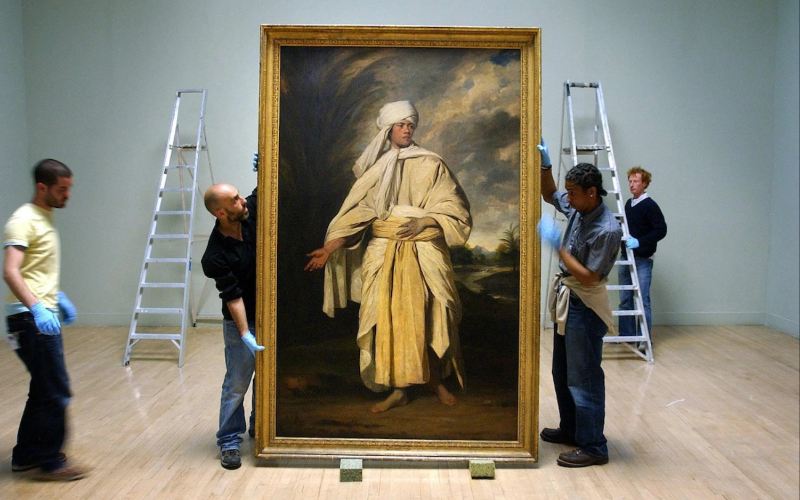A priceless portrait by Joshua Reynolds, one of England’s most well-known painters, is set to remain in the city for a while, albeit on somewhat unorthodox terms, so London’s art community can soon rejoice.
The tense race to keep Reynolds’ Portrait of Mai (Omai) inside England before its export ban expires is about to come to an end thanks to the announcement on Friday that the National Portrait Gallery in London and the Getty Museum in Los Angeles will jointly acquire the work. Reynolds completed the painting around 1776.
The painting will still travel between England and the United States as a result of the planned acquisition, and it may even feature at the Getty during the 2028 Summer Olympics.
The deal has not been finalized, and it is still possible that it won’t go through if both institutions are unable to contribute the required £50 million ($61.9 million) to maintain the work in the UK.
It is known, however, that the National Portrait Gallery has almost reached its goal and that the Getty has frequently purchased pieces for higher prices, such as the $53 million it shelled out for a Gustave Caillebotte painting at auction in 2021.
Acquisitions made by international joint acquisition are incredibly uncommon. In a circumstance like this, a UK museum has never collaborated with an American institution to acquire a work.
Nicholas Cullinan, director of the National Portrait Gallery, said in a statement, “The portrait is unique in both British and world culture and yet has never been in a museum collection: now it has the potential to be in two, one facing the Pacific from where Mai came, and the other only yards from Reynolds’ studio, where it was painted. For the Gallery it is important that this outstanding portrait is for the UK public, and we will share it with other institutions across the country.”
Timothy Potts, director of the Getty, called the work “both an icon of British portraiture and a uniquely noble representation of a person of color from the Pacific islands—a region that was in Mai’s day being colonized by Britain and other European nations.”
Reynolds produced this portrait in a great size, and among his other works is the well-known Blue Boy. Portrait of Mai (Omai), which stands close to eight feet tall, shows the first Polynesian visitor to Britain. He lived in London for a while before passing away in his own country in 1779.
The picture, which was completed for “personal reasons” as opposed to on contract, according to the Getty, was kept in Reynolds’s studio until his death in 1792.
It was later purchased by Frederick Howard, 5th Earl of Carlisle, who kept it in his Yorkshire estate until 2001, when it was sold at auction and bought for £10.3 million by collector John Magnier. John Magnier, along with his wife Susan, have frequently been listed among ARTnews’ Top 200 Collectors.
A London institution has made at least one other attempt to buy Portrait of Mai (Omai). The Tate museum network attempted to purchase it in 2005, but Magnier rejected the proposal. The owner who is currently relisting the painting for sale looks to be Magnier.
As the painting hasn’t been displayed to the public frequently, controversy erupted in 2018 when it was displayed at the Rijksmuseum in Amsterdam while on loan from the UK.
To give public institutions a chance to buy the painting, the UK government attempted to prevent it from leaving the country almost precisely a year ago.
The UK has ever imposed the most expensive export restriction on a piece of work. The prohibition has already been increased three times and will terminate on June 10.
The National Portrait Gallery initially struggled to raise the entire £50 million amount on its own, raising initial concerns about the museum’s ability to ultimately buy.
The museum has now probably discovered a means to be successful in the purchase by working with the affluent Getty.
In June, when the National Portrait Gallery reopens after an extension, Portrait of Mai (Omai) will make its debut there if the acquisition is approved.
ARTNEWS


